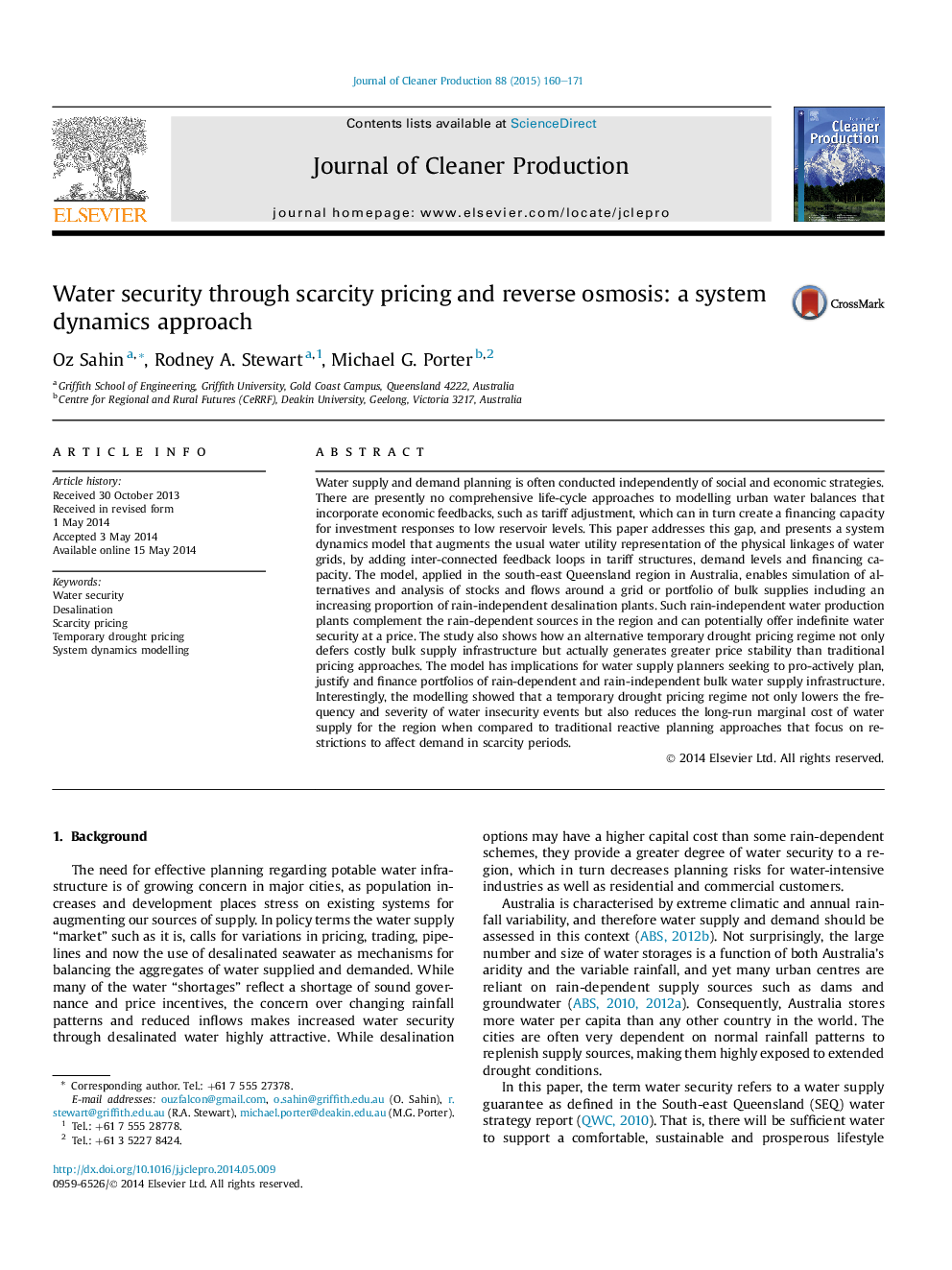| Article ID | Journal | Published Year | Pages | File Type |
|---|---|---|---|---|
| 1744767 | Journal of Cleaner Production | 2015 | 12 Pages |
Water supply and demand planning is often conducted independently of social and economic strategies. There are presently no comprehensive life-cycle approaches to modelling urban water balances that incorporate economic feedbacks, such as tariff adjustment, which can in turn create a financing capacity for investment responses to low reservoir levels. This paper addresses this gap, and presents a system dynamics model that augments the usual water utility representation of the physical linkages of water grids, by adding inter-connected feedback loops in tariff structures, demand levels and financing capacity. The model, applied in the south-east Queensland region in Australia, enables simulation of alternatives and analysis of stocks and flows around a grid or portfolio of bulk supplies including an increasing proportion of rain-independent desalination plants. Such rain-independent water production plants complement the rain-dependent sources in the region and can potentially offer indefinite water security at a price. The study also shows how an alternative temporary drought pricing regime not only defers costly bulk supply infrastructure but actually generates greater price stability than traditional pricing approaches. The model has implications for water supply planners seeking to pro-actively plan, justify and finance portfolios of rain-dependent and rain-independent bulk water supply infrastructure. Interestingly, the modelling showed that a temporary drought pricing regime not only lowers the frequency and severity of water insecurity events but also reduces the long-run marginal cost of water supply for the region when compared to traditional reactive planning approaches that focus on restrictions to affect demand in scarcity periods.
